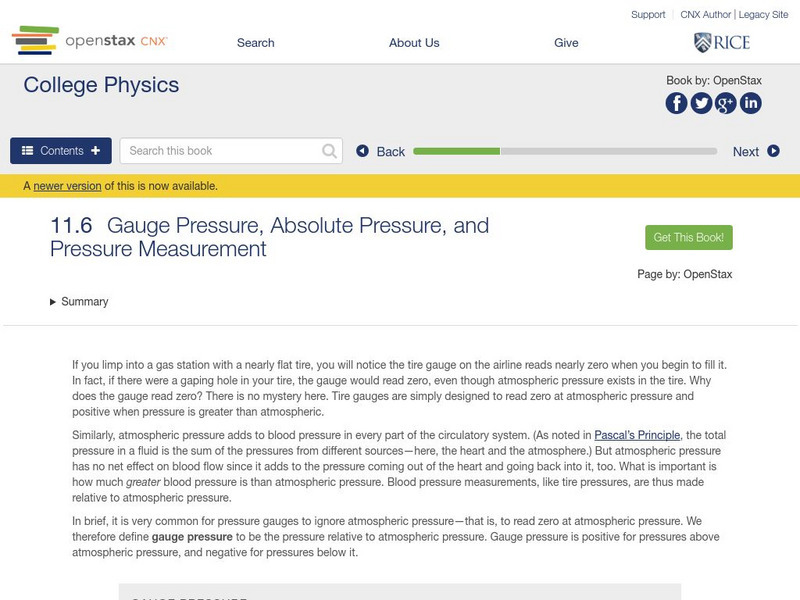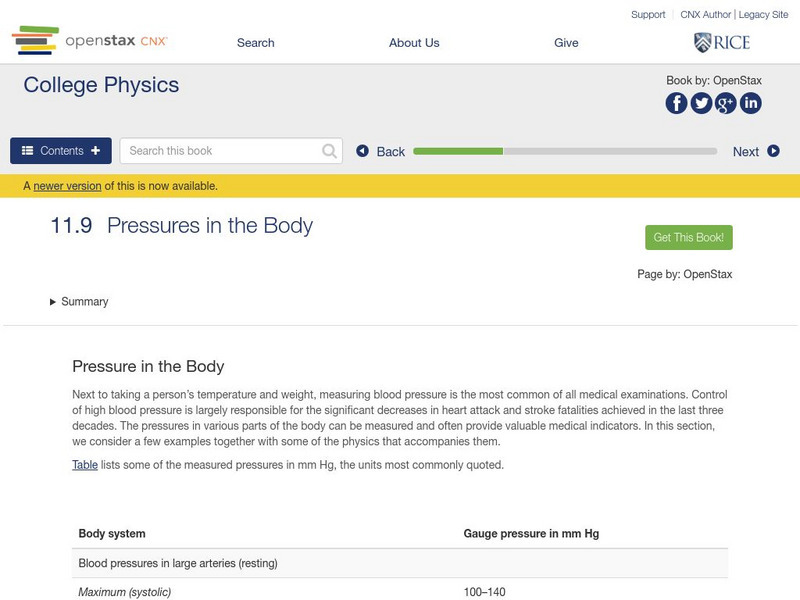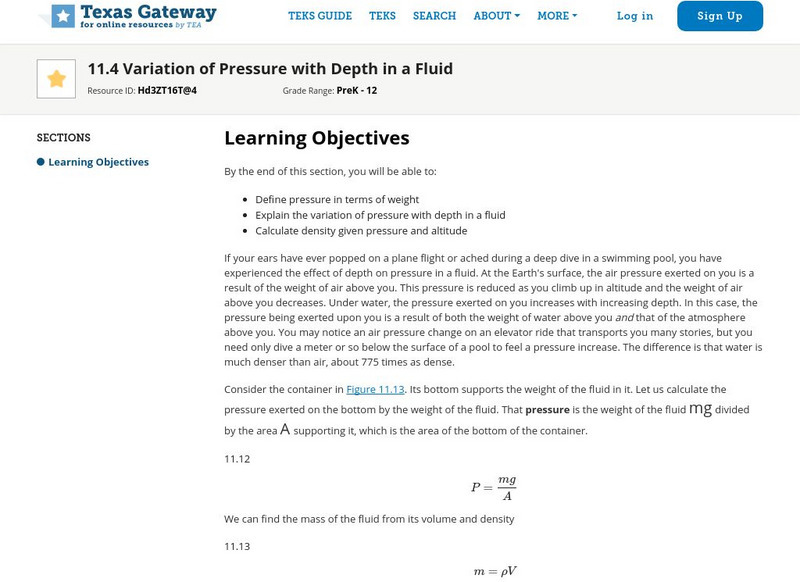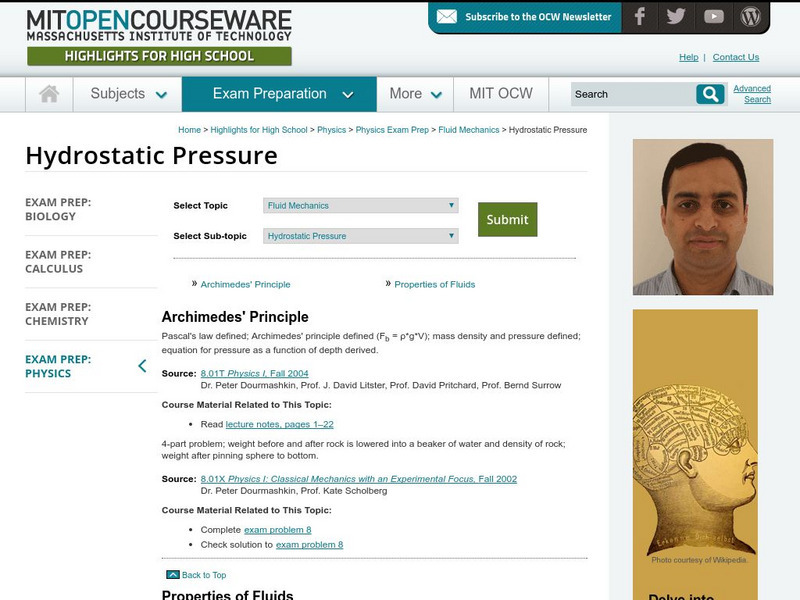Curated OER
Math Under Pressure
Students are told that an air tank contains a fixed volume of air under pressure. As air is used, the pressure decreases at a rate that depends on the depth. Students discuss how SCUBA divers calculate the amount of time they can spend...
OpenStax
Open Stax: Gauge Pressure, Absolute Pressure, and Pressure Measurement
From a chapter on Fluid Statics in a Physics textbook. This section of the chapter looks at the definitions of gauge pressure and absolute pressure, and how barometers work. It also discusses how blood pressure is measured. Includes...
OpenStax
Open Stax: Anatomy & Physiology: Capillary Exchange
Students learn about the primary mechanisms of capillary exchange and distinguish between capillary hydrostatic pressure and blood colloid osmotic pressure.
OpenStax
Open Stax: Pressure
From a chapter on Fluid Statics in a Physics textbook. This section of the chapter defines pressure and how it relates to force, as well as how to find the amount of force given area and pressure. Includes questions, problems and...
OpenStax
Open Stax: Pressures in the Body
From a chapter on Fluid Statics in a Physics textbook. This section of the chapter covers the different types of fluid pressures in the human body and how they are measured. Includes problems and exercises.
OpenStax
Open Stax: Variation of Pressure With Depth in a Fluid
From a chapter on Fluid Statics in a Physics textbook. This section of the chapter looks at the relationship of weight, depth, density, and altitude to pressure. Includes questions, problems and exercises.
Texas Education Agency
Texas Gateway: Variation of Pressure With Depth in a Fluid
By the end of this section, you will be able to define pressure in terms of weight, explain the variation of pressure with depth in a fluid, and calculate density given pressure and altitude.
Massachusetts Institute of Technology
Mit: Open Course Ware: Hydrostatic Pressure
Students explore hydrostatic pressure. Some topics examined in the activities are Pascal?s principle, hydrostatic pressure, and Archimedes? principle. The resource consists of video clips, lecture notes, practice problems, and exam...
Science Education Resource Center at Carleton College
Serc: Incompressibility of Liquids
A cool science demo where students observe bottles full of water drop their bottoms out!
Concord Consortium
The Concord Consortium: Molecular Workbench: Pressure Conveyance in Fluids
Adjust amounts of pressure in these two simulations to observe that liquids do convey pressure on objects in contact with them.
CK-12 Foundation
Ck 12: Pressure in Fluids
[Free Registration/Login may be required to access all resource tools.] Students will develop an understanding of density and pressure, and how to solve problems involving them.
Paul Dawkins
Paul's Online Notes: Calculus Ii: Applications of Integrals
The resource examines applications of integration. Topics investigated are arc length, surface area, center of mass, hydrostatic pressure, and probability density functions. Class notes, definitions, and examples with detailed solutions...
Physics Aviary
Physics Aviary: Practice Problems: Pressure From Fluid Layers
Students must determine the fluid pressure caused by a column of three immiscible fluids.
Physics Aviary
Physics Aviary: Practice Problems: Hydraulic Lift Problem
Determine the difference in pressure that leads to the motion of masses in an hydraulic lift and the difference in height when the piston reaches equilibrium.
Science Struck
Science Struck: Working Principle, Types, Applications of a Manometer
A manometer is used to measure the pressure of a gas or fluid. This article explains the principle behind the working of manometers, the different types, and how they are used. Formulas used to calculate pressure are also given.
Science Struck
Science Struck: Hydrostatic Pressure vs. Osmotic Pressure
Defines and explains what osmotic and hydrostatic pressure are, how to calculate them, their applications, and the instruments used to measure them.
Learn AP Physics
Learn Ap Physics: Physics B: Fluid Mechanics
A site dedicated to help students prepare for the AP Physics B test. This specific site reviews fluid mechanics including hydrostatic pressure, buoyancy, Archimedes' principle, Bernoulli's equation, and fluid flow continuity. Site...















